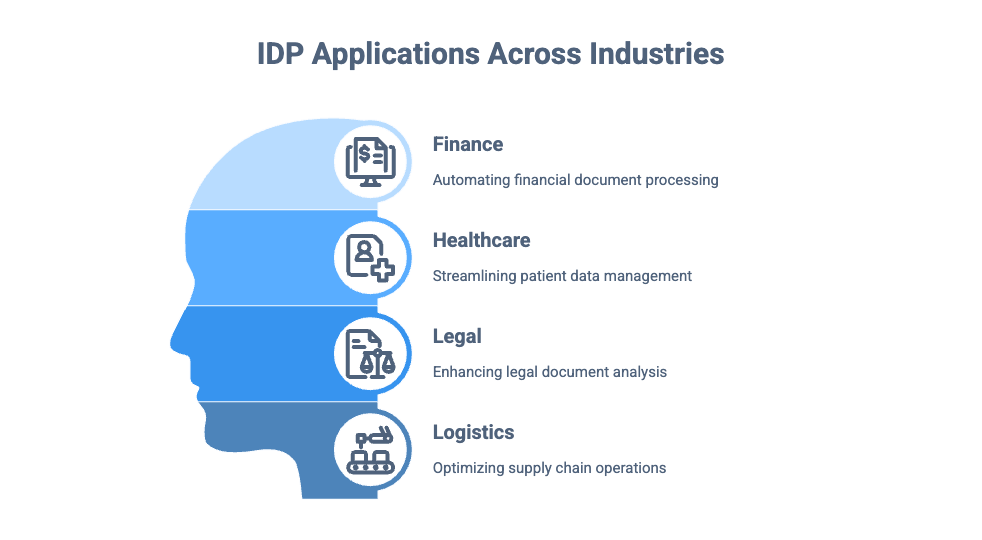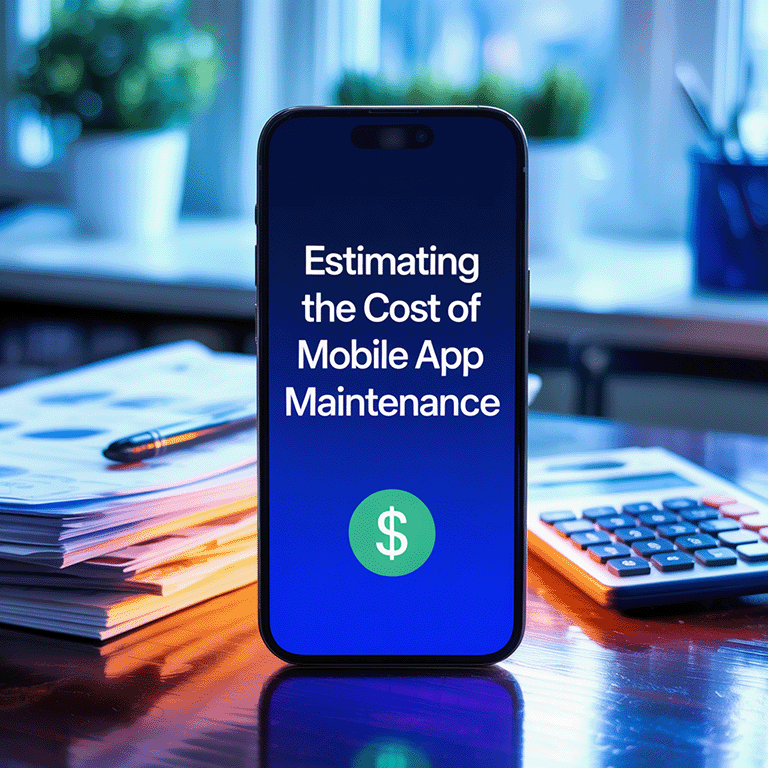Consider handling 10,000 contracts, invoices, or forms manually each month. For a lot of businesses, that is their daily reality rather than a hypothetical situation. And it takes a lot of time and is prone to mistakes.
Manual data handling is turning into a significant bottleneck as the amount of business documents increases dramatically, ranging from financial records and medical forms to legal agreements and logistics paperwork. Conventional approaches raise the possibility of errors, missed deadlines, and regulatory noncompliance in addition to slowing operations.
Here comes intelligent document processing technology, a game-changing process that automates workflows involving a lot of documents by utilizing artificial intelligence. The industry for intelligent document processing (IDP) is predicted to develop at a phenomenal compound annual growth rate of 37.5% within the next 2 years, reaching $75.2 billion.
In order to increase productivity, accuracy, and compliance, more businesses are implementing intelligent document processing in 2025. This guide will explain what it is, how it operates, and why.
What is Intelligent Document Processing (IDP)?
The technology known as Intelligent Document Processing (IDP) makes it possible to automatically extract, categorize, and validate data from both structured and unstructured documents. Regardless of whether you’re working with digital forms, scanned PDFs, or printed contracts, IDP can extract, evaluate, and integrate the pertinent data into your workflows without the need for human intervention.
IDP is changing rapidly these days. Data extraction is no longer the only use of contemporary intelligent document processing technology. Using sophisticated, AI-based document processing models, it reimagines the use of content in customer and employee experiences by making information instantly accessible and actionable at the precise moment and location that it is needed.
Core Components of IDP
(IDP) Intelligent document processing is strong because it combines several AI technologies:
- Optical Character Recognition (OCR) – Extract text and data from photos and documents, transform unstructured information into business-ready structured data, and gain useful insights.
- Natural Language Processing (NLP) – A branch of computer science and artificial intelligence (AI) that employs machine learning to help machines comprehend and communicate with human language.
- Machine Learning (ML) – A part of artificial intelligence (AI) that enables computers and robots to learn in the same manner that people do, to execute tasks independently, and to improve their performance and accuracy via experience and exposure to new data.
- Computer Vision – Improves understanding of document layouts, tables, and handwritten text.
Combining these technologies allows IDP to continuously improve and adjust to various document formats and types, going beyond simple automation. Together, these components form intelligent document processing technology that can decipher complicated documents.
IDP vs Traditional Document Processing
Traditional automation tools are not well-suited to managing variability because they frequently rely on inflexible templates. In contrast, manual processing is inconsistent, expensive, and slow.
On the other hand, IDP document processing requires little human intervention to adjust to various document formats and types. It supports a wide range of layouts, languages, and data types and provides scalability and accuracy that are unmatched by manual methods.
How Does Intelligent Document Processing Work?
There are usually four major steps in the IDP process:
- Ingestion of Documents: The system receives scanned photos, PDFs, or emails.
- Data Extraction: Names, dates, invoice numbers, and legal clauses are among the fields that AI models can extract.
- Validation: Business rules and reference databases are used to confirm the accuracy of the extracted data.
- Integration: Verified data is exported to document management platforms, ERP, and CRM, among other business systems.
The Role of AI
IDP AI is unique because of its capacity to decipher complex or disorganized inputs:
- Handwritten observations in medical records
- Tables in a variety of invoice formats
- Contracts with nested clauses and legal jargon
The system gains confidence in the outcomes and decreases the need for manual review as it learns and adjusts over time.
Speed and Scalability
So, how long does IDP take to process a document? Although complexity affects timing, many systems can now process simple documents in a matter of seconds and scale to millions of users daily, thanks to cloud infrastructure.
Advantages of Intelligent Document Processing
One of the primary reasons that top-tier companies throughout the world integrate and employ this technology is the benefits of intelligent document processing. Let’s break them down:

- Time Savings: Processing time can be reduced by more than 80% by automating data extraction.
- Cost Reduction: By eliminating the need for data entry teams, IDP can cut operating costs by as much as 60%, per industry data.
- Accuracy and Compliance: IDP guarantees that documents are processed in compliance with regulations such as GDPR and HIPAA while reducing human error.
- Employee Productivity: Rather than concentrating on monotonous tasks, teams can concentrate on strategic work.
- Audit-Readiness: Clear reporting and audits are made possible by complete digital trails.
Real-World IDP Use Cases
Are you curious about how IDP works in practical situations? Below are intelligent document processing examples from various industries:

Finance
- Automating invoice processing and confirming expenditure reports.
- Making sure that data is entered into accounting software in real time
Healthcare
- Patient intake forms are being digitized
- Using IDP use cases that are adapted to HIPAA regulations to streamline insurance claims processing
Legal
- Extracting important terms from agreements
- Classifying thousands of legal documents to improve e-discovery workflows
Logistics
- Reading bills of lading and customs forms
- Accelerating shipment approvals and compliance checks
Key Considerations for Adopting IDP
Before diving into IDP, consider the following:
Trust and Reliability
Is IDP trustworthy? Of course. Nowadays, a lot of vendors follow strict security guidelines such as ISO 27001, SOC 2, and HIPAA compliance. Human-in-the-loop choices and ongoing AI training also improve system dependability.
Build vs. Buy
Is it better to build or buy intelligent document processing solutions? Although building offers flexibility, it requires a lot of resources. Purchasing off-the-shelf platforms guarantees improved scalability, simpler support, and a quicker time to value.
Integration Needs
It should be easy for your IDP solution to integrate with current platforms such as Microsoft 365, Salesforce, or SAP. For seamless integration, prebuilt connectors and API availability are crucial.
The Future of Intelligent Document Processing in 2025
Smarter AI with Generative Capabilities
In the future, IDP AI will use generative models to better comprehend document intent, sentiment, and context. This entails more intelligent summarization, auto-completion, and even real-time decision support.
Broader Market Adoption
Anticipate intelligent document processing to expand from enterprises to SMBs and startups as platforms become more accessible and user-friendly.
Regulatory Pressure Driving Adoption
Businesses will look to IDP solutions that provide safe, legal automation in response to growing data privacy concerns. More AI tools certified for use under developing regulations, such as the EU AI Act or revised GDPR standards, are likely to become available.
Conclusion
Intelligent document processing provides a more intelligent solution as companies produce more documents than ever before. IDP revolutionizes how businesses operate by reducing expenses, increasing accuracy, and saving time with AI-powered solutions that can analyse, extract, and validate data in a matter of seconds.
Regardless of your field—finance, healthcare, law, or logistics—IDP intelligent document processing has something to offer. IDP is the document processing of the future, not just a choice, as businesses continue to adopt automation and artificial intelligence.
Ready to Take the Next Step?
Explore how LITSLINK can assist your company in utilizing the potential of intelligent document processing automation. We are here to help you navigate the transition from manual chaos to streamlined intelligence as a reputable leader in automation and artificial intelligence.





